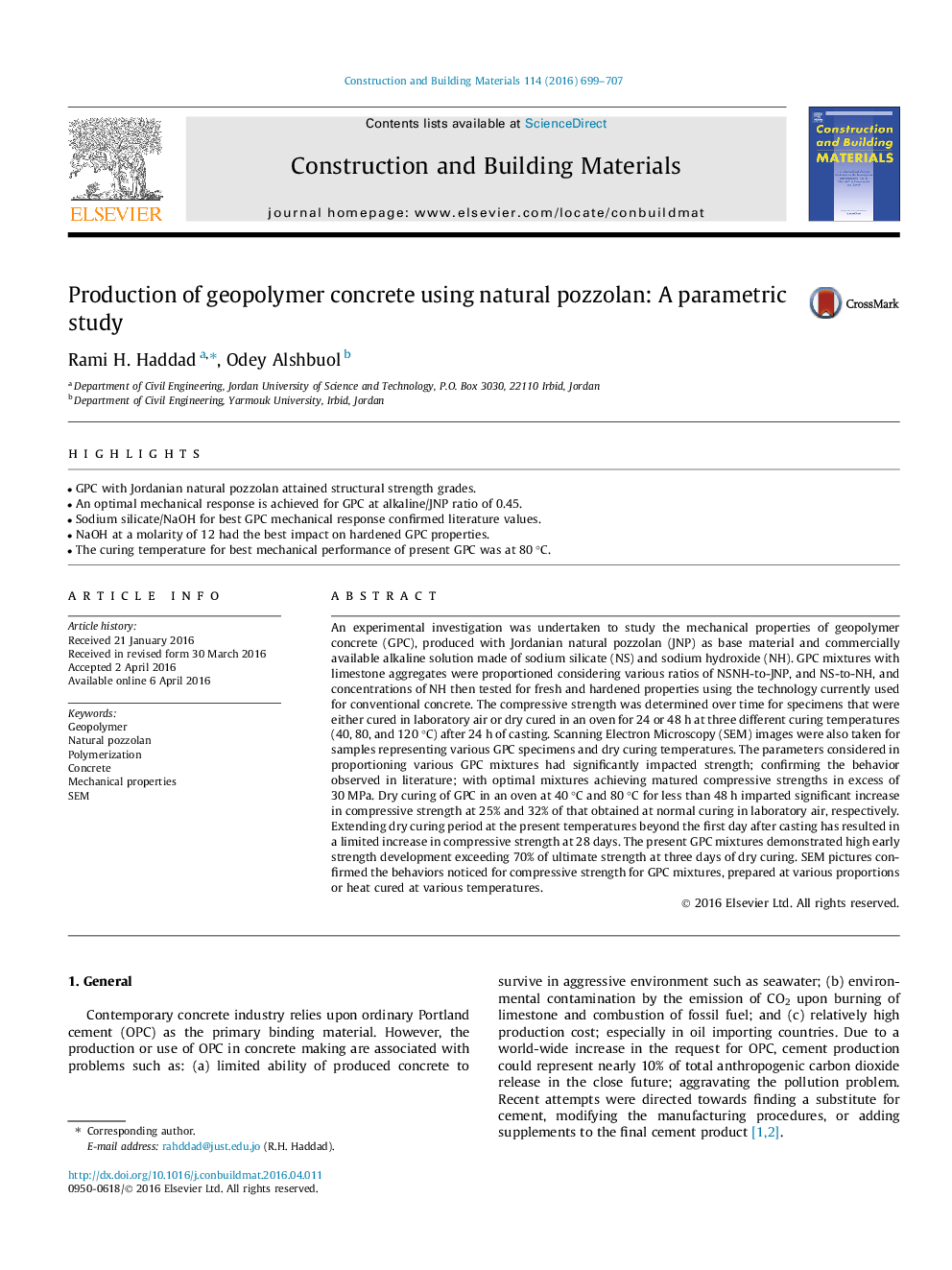| Article ID | Journal | Published Year | Pages | File Type |
|---|---|---|---|---|
| 256025 | Construction and Building Materials | 2016 | 9 Pages |
•GPC with Jordanian natural pozzolan attained structural strength grades.•An optimal mechanical response is achieved for GPC at alkaline/JNP ratio of 0.45.•Sodium silicate/NaOH for best GPC mechanical response confirmed literature values.•NaOH at a molarity of 12 had the best impact on hardened GPC properties.•The curing temperature for best mechanical performance of present GPC was at 80 °C.
An experimental investigation was undertaken to study the mechanical properties of geopolymer concrete (GPC), produced with Jordanian natural pozzolan (JNP) as base material and commercially available alkaline solution made of sodium silicate (NS) and sodium hydroxide (NH). GPC mixtures with limestone aggregates were proportioned considering various ratios of NSNH-to-JNP, and NS-to-NH, and concentrations of NH then tested for fresh and hardened properties using the technology currently used for conventional concrete. The compressive strength was determined over time for specimens that were either cured in laboratory air or dry cured in an oven for 24 or 48 h at three different curing temperatures (40, 80, and 120 °C) after 24 h of casting. Scanning Electron Microscopy (SEM) images were also taken for samples representing various GPC specimens and dry curing temperatures. The parameters considered in proportioning various GPC mixtures had significantly impacted strength; confirming the behavior observed in literature; with optimal mixtures achieving matured compressive strengths in excess of 30 MPa. Dry curing of GPC in an oven at 40 °C and 80 °C for less than 48 h imparted significant increase in compressive strength at 25% and 32% of that obtained at normal curing in laboratory air, respectively. Extending dry curing period at the present temperatures beyond the first day after casting has resulted in a limited increase in compressive strength at 28 days. The present GPC mixtures demonstrated high early strength development exceeding 70% of ultimate strength at three days of dry curing. SEM pictures confirmed the behaviors noticed for compressive strength for GPC mixtures, prepared at various proportions or heat cured at various temperatures.
